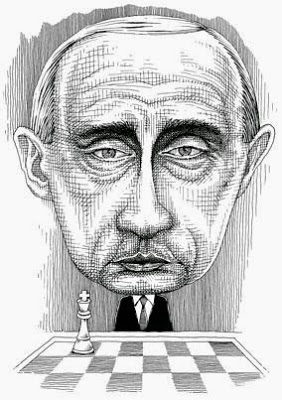| Online: | |
| Visits: | |
| Stories: |

| Story Views | |
| Now: | |
| Last Hour: | |
| Last 24 Hours: | |
| Total: | |
The Russian Enigma Unravels
Wednesday, December 17, 2014 12:13
% of readers think this story is Fact. Add your two cents.
Marctomarket.com
Winston Churchill famously said of Russian foreign policy that it was “…a riddle, wrapped in a mystery, inside an enigma.” What people leave out is what followed. Churchill offered an answer: “… perhaps there is a key. That key is Russian national interest.”
And so it is.
Like most crises, the crisis Russia is experiencing is over-determined, in the sense there are several causes. The actions in Ukraine, and particularly the annexation of Crimea, and the continued destabilization of East Ukraine spurred sanctions from the US and Europe. The sanctions, especially the ban on access to the short-term funding markets in the US and Europe, are more significant given the other developments.
However, other causes of Russia’s difficult straits stems from two developments largely out of its control. The first is the end of the international markets affection toward emerging markets. The multi-year bullish EM phase was a function of a number of factors, like low and falling US interest rates, a weak US dollar, rising commodity prices, and a rapidly growing China, that no longer exist. Russia, like many emerging market countries, did not take advantage of the commodity boom to diversify the economy.
The second development that was largely outside of Russia’s influence is the dramatic decline in oil prices. Even if Russia did not antagonize Saudi Arabia by supporting the Syrian and Iranian regime, Saudi Arabia would most likely have responded to the challenges represented by the US shale producers, Canadian tar sands and other non-OPEC producers. OPEC itself faces governance issues and enforcement.
The economic crisis Russia is facing is severe. However, talk of an imminent Russian default is misplaced. Russia appears to have $380-$400 bln of reserves. Not all of these are liquid. Many in the blogosphere heralded Russia’s purchases of gold as a way to diversify away from fiat currencies. Russia has more than 10% of its reserves in gold and it is cumbersome to use to intervene or to offset a currency mismatch. Of course, it earns no yield either. Another $170 bln of reserves are part of the two sovereign wealth funds Russia has established. These investments might not be particularly liquid either.
According to the central bank’s figures, Russia has a total of about $54 bln of foreign currency bonds coming due in H1 15. Most of this (~$40.5 bln) is bank debt. There is about $13 bln of foreign currency denominated corporate bonds maturing and about $500 mln of hard currency sovereign debt maturing. For all of next year, Russia has an estimated $102 bln external debt maturing. And another $100 bln in 2016.
In the meantime, Russian oil companies are earning dollars (mostly) from its foreign sales. Although the oil and gas sales earn fewer dollars, those few dollars still turn into more roubles. Indeed, Russian companies with substantial foreign sales are in a relatively good position. This is to say that Russia’s debt servicing ability is far from exhausted.




